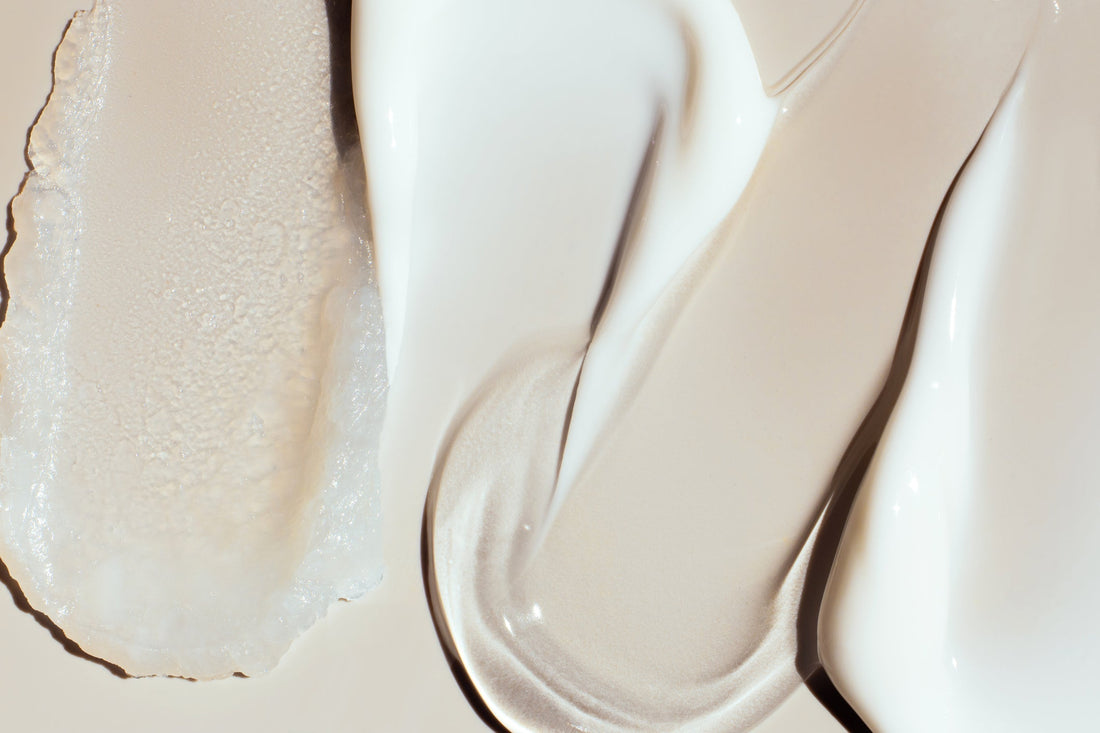
Occlusives, humectants, emollients, oh my
Share
Most people know hydration is key—but the how is often misunderstood.
If you’ve ever layered serums and moisturizers and still felt dry (or oily), this post is for you.
Behind every so-called “moisturizer” is a blend of three ingredient types—each with a different role in how your skin retains water: humectants, emollients, and occlusives.
Let’s decode.
THE SKIN BARRIER: QUICK REFRESHER
Your skin barrier is your body’s natural shield. It keeps moisture in and irritants out. But that only works if the skin is well-supported.
Hydration isn’t just about adding water—it’s about keeping it there.
That’s where humectants, emollients, and occlusives come in.
1. HUMECTANTS: THE WATER MAGNETS
-
WHAT THEY DO: draw water into the skin
-
BEST FOR: dehydrated skin, tightness, fine lines from dryness
-
EXAMPLES: glycerin, hyaluronic acid, polyglutamic acid, tremella, aloe vera
Humectants act like sponges. They pull moisture from the air (when humidity is high) or from deeper skin layers (when it’s not).
But there’s a catch: if you don’t seal them in, they can leave your skin drier over time.
👉 PRO TIP: Apply humectants on damp skin, then follow with something richer.
2. EMOLLIENTS: THE SMOOTHERS
-
WHAT THEY DO: fill in tiny cracks in the skin barrier
-
BEST FOR: flaky, textured, or compromised skin
-
EXAMPLES: jojoba oil, squalane, fatty acids, ceramides
Emollients soften and condition the skin by rebuilding its natural lipid layer. They don’t pull in water—they help lock it in by repairing skin structure.
If your skin feels rough, this is what it’s craving.
3. OCCLUSIVE: THE SEALERS
-
WHAT THEY DO: create a protective layer to trap moisture
-
BEST FOR: very dry or sensitive skin, cold weather
-
EXAMPLES: tallow, beeswax, lanolin, shea butter, petrolatum
Occlusives are heavier by design. They sit on top of the skin to prevent moisture from escaping.
They’re essential for barrier repair, especially if your skin is damaged, over-exfoliated, or exposed to harsh environments.
HOW AND WHEN TO LAYER THEM
You don’t need ten steps—just the right order:
- Start with humectants (on damp skin)
- Layer or mix in emollients
- Seal with an occlusive balm
This simple structure mimics what healthy skin does on its own:
💧 draw in water → 🧈 soften + smooth → 🛡️ seal it in
THE BOTTOM LINE
Understanding your skincare is more powerful than owning more of it.
Once you know how these three ingredients work, you can hydrate smarter—not harder.